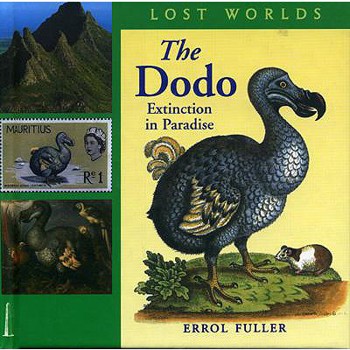The Dodo: Extinction in Paradise
Select Format
Select Condition 
Book Overview
The story of the dodo is a classic of evolution and extinction equal in fascination to that of the dinosaur or the saber-toothed tiger. Unlike these, however, the dodo was the first recorded example... This description may be from another edition of this product.
Format:Hardcover
Language:English
ISBN:1593730020
ISBN13:9781593730024
Release Date:May 2004
Publisher:Bunker Hill Publishing
Length:48 Pages
Weight:0.45 lbs.
Dimensions:0.4" x 6.0" x 6.6"
Customer Reviews
1 rating
A Beautiful History of Extinction's Emblem
Published by Thriftbooks.com User , 21 years ago
"As dead as a dodo." Everyone knows the phrase (and it is far clearer than the obscure doornail variant). The dodo is universally acknowledged as a symbol of extinction, not just a dead bird, not just a dead species, but an emblem of wipeout. Although everyone knows the dodo, we know almost nothing about it. It was discovered and wiped out long before the days of scientific observation. Errol Fuller has told us just about everything there is to know about the bird in _Dodo: A Brief History_ (HarperCollins). It is not as big or lush a volume as the one he produced on another goner, the great auk, but it is beautiful and fascinating. The facts about the birds are slim. They came from the small island of Mauritius in the Indian Ocean. They were actually large pigeons. They weighed more than fifty pounds, according to an observer from 1634. They had ridiculously small wings that were a parody of flight. We don't know what they ate, what they sounded like, or how they mated. "But of one thing we can be sure," he writes, "There are now no dodos." Europeans arrived on Mauritius when the Dutch navy landed in 1598 (there had been transient visits by Portuguese and Arabs before then), and only fifty or so years later, there were no dodos. The dodo had no predators before encountering humans, so it had slipped into a flightless existence, and also did not flee when approached. They were easy prey. After the bird's extinction, no one much cared about it. In 1755, there was exactly one stuffed dodo. It was within the Ashmolean Museum in Oxford. It was in such a decrepit state that it was consigned to the flames. The head and right foot alone were saved, and "these pitiful fragments" still exist and have been used for DNA samples. Of course they are depicted here.After more than a century of oblivion, Fuller explains that one simple event caused "... the general public to take notice of the dodo, and the bird itself to enter the ranks of universal celebrity." In 1865, Lewis Carroll published _Alice's Adventures in Wonderland_, with an episode of the "caucus race" which the dodo decides "Everybody has won, and all must have prizes." Prizes, he also decides, have to come from Alice herself. Sir John Tenniel illustrated the episode, with his image based on first-hand depictions. Fuller explains that the dodo, like the book, "... was suddenly in vogue and - again just like the book - it has never since been out of it." Dodo poems followed, and "Dodo" as a nickname for girls, dodos on teapots, tea towels, stamps, coffee mugs, advertisements, table service, and more. We will never forget the dodo. Fuller's handsome, beautifully illustrated volume of all this dodo lore helps in the cause of dodo remembrance. It is throughout good-humored, and in accord with its subject, it is peculiar, funny, and sad.





